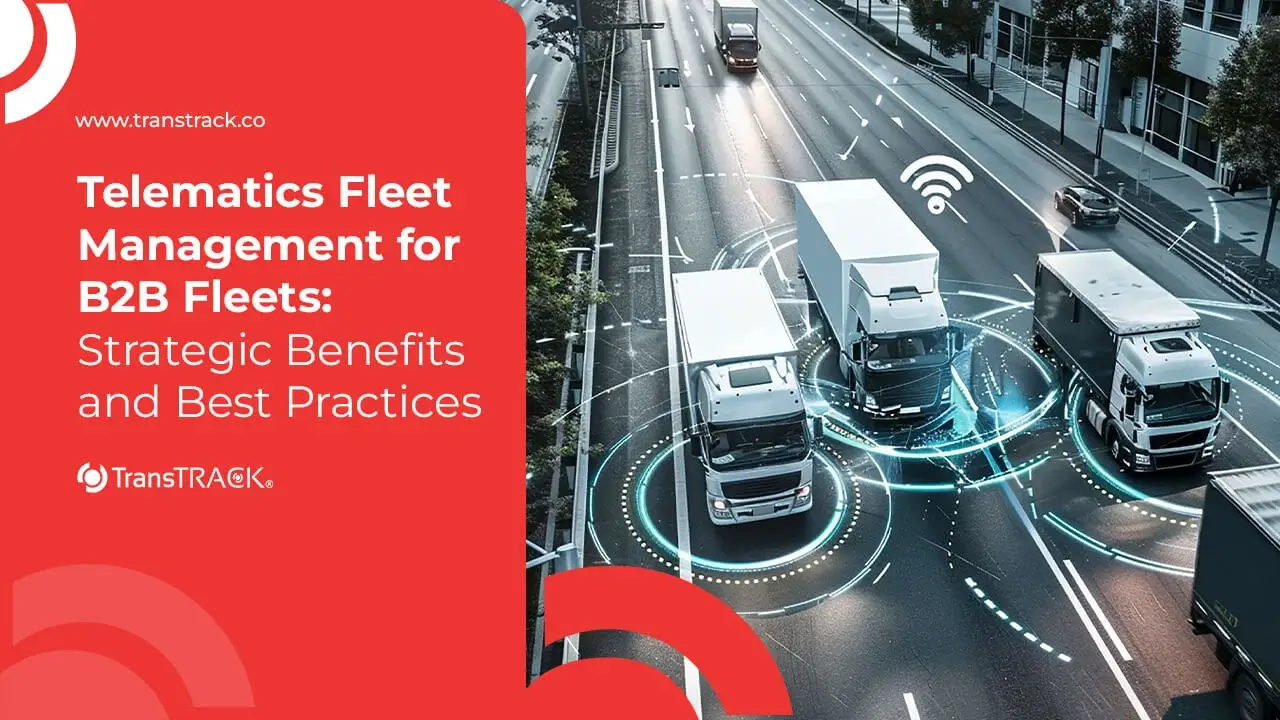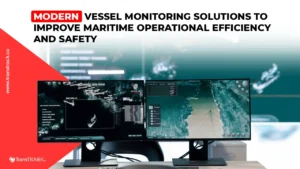Telematics Fleet Management for B2B Fleets: Strategic Benefits and Best Practices
Posted on July 11, 2025 by Nur Wachda Mihmidati

Telematics fleet management offers a smarter, more connected way to monitor and control vehicle operations. By integrating GPS tracking, engine diagnostics, and real-time data analytics, businesses gain full visibility into their fleet performance. This technology not only enhances productivity and safety but also helps reduce operational costs and improve service quality. Get to know more in this TransTRACK article!
What Is Telematics Fleet Management?
Telematics Fleet Management is the use of technology to monitor and manage vehicle fleets through GPS tracking, sensors, and data communication systems. By collecting real-time information on vehicle location, speed, engine diagnostics, fuel usage, and driver behavior, telematics helps fleet managers make informed decisions to improve efficiency, safety, and compliance. This data is typically transmitted to a centralized platform where it can be analyzed to identify trends, prevent issues, and optimize daily operations.
The integration of telematics enables companies to reduce fuel consumption, lower maintenance costs, enhance route planning, and ensure regulatory compliance. It also plays a vital role in improving driver performance and customer service by offering visibility across the entire fleet. In essence, telematics transforms fleet management from a reactive process into a proactive, data-driven strategy.
Key Components of a Telematics System
Here are the key components of a telematics system that play a vital role in optimizing fleet operations. Each component works together to provide visibility, efficiency, and full control over day-to-day vehicle activities.
GPS Tracking
GPS tracking enables real-time monitoring of vehicle locations, allowing fleet managers to know where each unit is at any given moment. This simplifies dispatching, scheduling, and route tracking. With full visibility, delays and unauthorized route deviations can be minimized.
Engine Diagnostics
This component reads data from the vehicle’s onboard diagnostics system to monitor engine health and technical performance. It can detect issues like engine temperature, oil pressure, or fault codes early. Preventive maintenance can then be scheduled in advance to avoid costly breakdowns.
Driver Behavior Monitoring
The system tracks driving habits such as harsh braking, rapid acceleration, speeding, and idling time. This data is used to assess and improve driver performance for better safety and fuel efficiency. Companies can also implement training or incentives based on driver behavior.
Route Optimization
This feature analyzes traffic conditions, delivery schedules, and vehicle positions to suggest the most efficient routes. Optimized routing helps reduce travel time and fuel consumption significantly. It also improves customer satisfaction with faster, on-time deliveries.
Real-Time Alerts and Reporting
The system sends instant notifications for critical events such as speeding, maintenance reminders, or route deviations. Fleet managers can take immediate action based on the alerts received. In addition, comprehensive reports are generated for performance analysis and regulatory compliance.
Strategic Benefits for B2B Organizations
Here are the Strategic Benefits of Telematics for B2B Organizations, designed to drive long-term value and operational excellence across fleets:
Cost Reduction in Fuel, Downtime, and Repairs
By monitoring routes, idling, and engine health, telematics helps reduce unnecessary fuel consumption and detect maintenance issues early. This leads to fewer breakdowns, lower repair costs, and minimized vehicle downtime. Over time, these efficiencies result in significant operational savings.
Better Decision-Making with Actionable Data
Telematics provides real-time insights and historical data on fleet performance, driver behavior, and vehicle utilization. These analytics support smarter strategic planning and day-to-day decision-making. Businesses can optimize operations, allocate resources more effectively, and identify areas for improvement.
Improved SLA Performance and Delivery Timelines
With real-time tracking and route optimization, companies can improve delivery accuracy and punctuality. This ensures better adherence to Service Level Agreements (SLAs) and strengthens client trust. Predictable and timely deliveries also enhance the overall customer experience.
Enhanced Safety Compliance and Insurance Savings
Monitoring driver behavior and vehicle health promotes a culture of safety and helps meet regulatory compliance standards. Safer driving records can also lead to reduced insurance premiums and fewer accident-related expenses. This contributes to both risk mitigation and long-term cost efficiency.
Choosing the Right Telematics Vendor
Choosing the Right Telematics Vendor is a crucial step in ensuring long-term success and seamless integration within your fleet operations. The ideal vendor should offer not only robust technology but also adaptability, support, and future-proof capabilities that align with your business goals.
API Integrations with Existing ERP/TMS
Ensure the telematics platform can easily integrate with your existing Enterprise Resource Planning (ERP) or Transportation Management System (TMS). Smooth API integration enables automatic data syncing across systems, reducing manual work and improving workflow efficiency. This helps create a unified ecosystem for real-time decision-making and reporting.
Cloud-Based vs Local Systems
Cloud-based solutions offer greater flexibility, easier updates, and remote access from any device—ideal for modern, distributed teams. In contrast, local or on-premise systems may offer more control but often require higher upfront investment and IT maintenance. Consider your infrastructure, mobility needs, and long-term scalability when deciding between the two.
Support, Scalability, and Data Security
Choose a vendor that provides responsive customer support, clear SLAs, and training resources. The system should be able to scale as your fleet grows, without compromising performance. Lastly, data protection is critical—ensure the vendor complies with security standards and offers encryption, access controls, and data privacy compliance.
Telematics fleet management has become an essential solution for businesses aiming to improve operational efficiency, safety, and cost control. With real-time data on vehicle performance, driver behavior, and route optimization, companies can make smarter decisions and deliver better service while reducing risks and expenses.

Ready to take your fleet operations to the next level? Optimize performance, ensure compliance, and gain full visibility with the Fleet Management System from TransTRACK. 🚚📡
Start your transformation today—reach out to our team for a free consultation!
Recent Post
Topic :
Recommended Articles

 Bahasa Indonesia
Bahasa Indonesia







